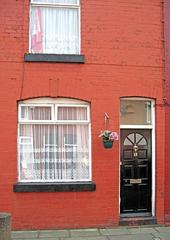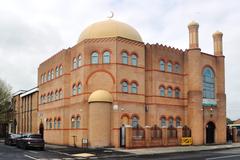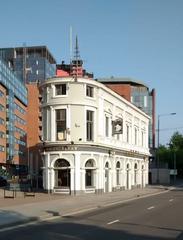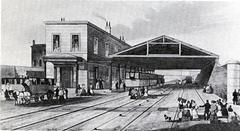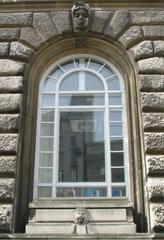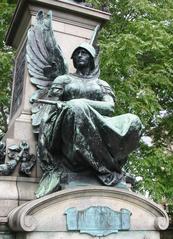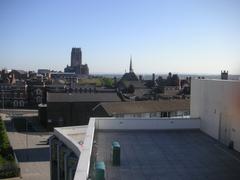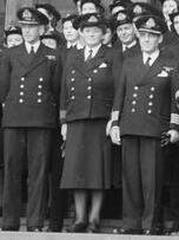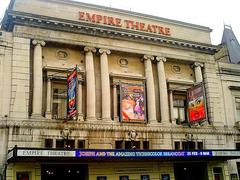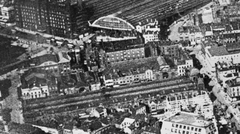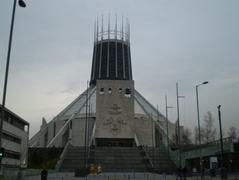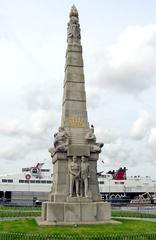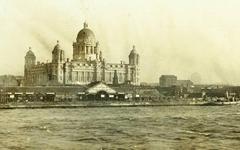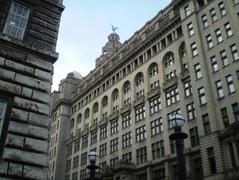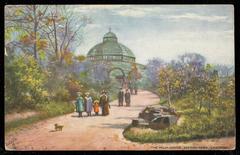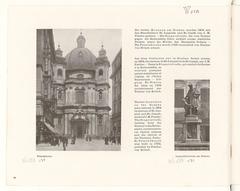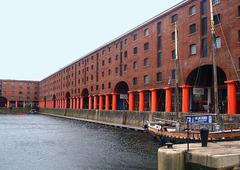Chinese Merchant Seamen Memorial Liverpool: Visiting Hours, Tickets & Travel Guide
Date: 14/06/2025
Introduction
The Chinese Merchant Seamen Memorial in Liverpool is a significant and poignant tribute to the thousands of Chinese sailors who played an indispensable role in British maritime history, particularly during both World Wars. Located at Liverpool’s Pier Head—a UNESCO World Heritage waterfront—the memorial commemorates not only the bravery and contributions of these seamen but also the tragic chapter of forced repatriations that tore families apart after World War II. With its central location, bilingual inscriptions, and open-air accessibility, the memorial stands as a testament to Liverpool’s rich multicultural heritage and the enduring resilience of its Chinese community.
This comprehensive guide provides all you need to know about visiting the Chinese Merchant Seamen Memorial, including historical context, practical visitor information, and tips for exploring related sites. Whether you are a history enthusiast, a local resident, or a traveler seeking to understand Liverpool’s diverse identity, this article will help you make the most of your visit.
For more background and resources, see: Liverpool Museums, BBC News, The Guardian.
Table of Contents
- Memorial Overview and Location
- Visiting Hours and Admission
- Accessibility and Visitor Facilities
- Historical Background
- Creation and Design of the Memorial
- Cultural and Social Significance
- Community Legacy and Educational Initiatives
- Practical Visitor Tips
- Nearby Attractions
- Frequently Asked Questions (FAQ)
- Visuals and Media Resources
- Conclusion and Next Steps
- References and Further Reading
Memorial Overview and Location
The Chinese Merchant Seamen Memorial is situated at Pier Head, Liverpool L3 1DP, United Kingdom—one of the city’s most iconic public spaces, close to the historic docks, Royal Liver Building, and Liverpool’s Chinatown. Its central location makes it easily accessible via public transport, including James Street Station (approx. 5-minute walk), bus routes, and nearby parking facilities.
The memorial itself is a polished black granite slab set atop a low plinth, inscribed in both English and Chinese. The powerful inscription recognizes the seamen’s service, the forced separations, and the hope that such injustices never occur again. The surrounding paved area offers a quiet space for reflection amidst the vibrant waterfront.
Visiting Hours and Admission
- Hours: The memorial is outdoors and open to the public 24 hours a day, 7 days a week, year-round.
- Admission: Free. No tickets or prior booking required.
Visitors are welcome to explore the site at any time, making it an ideal addition to a Liverpool heritage walk or a spontaneous visit.
Accessibility and Visitor Facilities
- Wheelchair Accessible: The site is flat, paved, and suitable for wheelchairs and prams.
- Seating: Benches are available nearby.
- Restrooms: Located at the Museum of Liverpool and other waterfront facilities.
- Eating and Shopping: Numerous cafés, restaurants, and shops are within walking distance.
- Parking: Nearby car parks include Q-Park Liverpool ONE and Liverpool Waterfront Car Park.
Historical Background
Chinese Seamen in Liverpool
Chinese merchant seamen began arriving in Liverpool in the late 19th century, mainly through the Blue Funnel Line (Alfred Holt & Co.), which established regular trade routes between the UK and China. By the early 20th century, Liverpool had the oldest Chinese community in Europe, and the city’s docks became a hub for international maritime labor (Liverpool Museums).
Wartime Contributions
During both World Wars, especially World War II, approximately 20,000 Chinese sailors served in the British Merchant Navy. They braved hazardous Atlantic convoys, enduring the constant threat of German U-boat attacks and poor working conditions. These sailors were essential to maintaining Britain’s supply lines but faced discrimination—receiving lower pay, fewer rights, and reduced compensation compared to their British colleagues (The Guardian).
The 1946 Repatriations
After WWII, the British government, shipping companies, and local authorities orchestrated the forced deportation of over 1,300 Chinese seamen from Liverpool in 1946. Many had married local women and started families; their sudden removal left wives and children in distress, often unaware of the fate of their loved ones. This episode was hidden for decades but is now recognized as a grave injustice, with ongoing calls for formal acknowledgment and apology (BBC News; Liverpool Echo).
Creation and Design of the Memorial
Unveiled at Pier Head in January 2006, the Chinese Merchant Seamen Memorial was the result of years of campaigning by descendants, community leaders, and local historians. The memorial’s minimalist design—crafted from polished black granite—features a bilingual inscription that directly addresses the injustices faced by the seamen and their families. The choice of materials and dual-language text reflects both the endurance of the Chinese community and Liverpool’s multicultural character (Liverpool City Council; China Daily).
Cultural and Social Significance
The memorial serves as a focal point for remembrance and education, not only for Liverpool’s Chinese community but also for the wider public. Annual ceremonies are held around Chinese New Year and Remembrance Day, fostering intergenerational dialogue and cultural exchange. The memorial’s presence has also prompted public discussions about historical injustices and the importance of inclusive historical memory (National Museums Liverpool).
Community Legacy and Educational Initiatives
Awareness of the Chinese merchant seamen’s story has led to exhibitions, oral history projects, and educational programs. Projects like “The Dragons of the Pool” and interpretive displays at the Museum of Liverpool document family stories and promote understanding. The 2024 unveiling of a commemorative blue plaque in Chinatown further cements the community’s ongoing efforts to seek justice and recognition (Socialist China; Heritage Fund).
Practical Visitor Tips
- Best Time: Daylight hours offer a safe and tranquil atmosphere; early mornings and late afternoons are particularly peaceful.
- Photography: Permitted—please be respectful, especially during ceremonies.
- Events: Annual remembrance and community events are held; check local tourism and community group websites for schedules.
- Guided Tours: While there are no dedicated tours for the memorial, it is included in some city and maritime heritage walks. Contact the Liverpool Visitor Centre for details.
Nearby Attractions
- Museum of Liverpool: Exhibitions on maritime history and Chinese community contributions (Museum of Liverpool).
- Royal Liver Building: An architectural icon on the waterfront.
- Liverpool’s Chinatown: The oldest in Europe, with shops, restaurants, and the landmark Chinese Arch.
- Other Memorials: Merchant Navy War Memorial, international seafarers’ memorials, and the International Slavery Museum.
Frequently Asked Questions (FAQ)
Q: Where is the memorial located?
A: Pier Head, Liverpool L3 1DP, near the Royal Liver Building and Museum of Liverpool.
Q: What are the visiting hours?
A: Open 24 hours a day, 7 days a week, year-round.
Q: Is there an entry fee?
A: No, visiting the memorial is free.
Q: Is the site wheelchair accessible?
A: Yes, the area is fully accessible.
Q: Are guided tours available?
A: Some heritage walking tours include the memorial; check with local visitor information centers.
Q: Are there special events at the memorial?
A: Annual remembrance ceremonies are held, especially around Remembrance Day and Chinese New Year.
Visuals and Media Resources
- Images: High-quality photographs and alt-tagged images of the memorial and its surroundings are available from National Museums Liverpool.
- Virtual Tours & Interactive Maps: See Liverpool World Heritage for digital resources and maps.
- Documentaries: The BBC’s “Shanghai’d” and other media have covered the history of the Chinese seamen (Wikipedia).
Conclusion and Next Steps
The Chinese Merchant Seamen Memorial in Liverpool is more than just a monument—it is a vital reminder of the courage, diversity, and resilience that shaped the city’s history. It acknowledges both the heroism and the injustices endured by Chinese seafarers and their families, inviting all visitors to reflect, remember, and learn.
To enhance your visit, explore nearby museums, join a heritage walk, or use digital guides such as the Audiala app for immersive audio tours. Engage with Liverpool’s living history, and help ensure that the legacy of the Chinese merchant seamen is honored for generations to come.
Plan your visit, share your experience, and continue the conversation about diversity and inclusion in Britain’s maritime past.
References and Further Reading
- Liverpool Museums – Chinese Community in Liverpool
- The Guardian – The Forgotten Chinese Seamen Who Helped Britain in the War
- Liverpool City Council – Chinese Seamen Memorial Unveiled
- Liverpool Echo – Families Desperate to Uncover Fates of Liverpool’s Chinese Seamen
- Heritage Fund – History Lost: Chinese Sailors Uncovered
- Socialist China – Commemorative Plaque for Deported Chinese Merchant Seamen Unveiled in Liverpool
- BBC Liverpool – Liverpool Chinese Community Feature
- Wikipedia – Liverpool Naval Memorial
- Liverpool World Heritage
- Chinatownology – Liverpool Chinese Seamen Memorial

